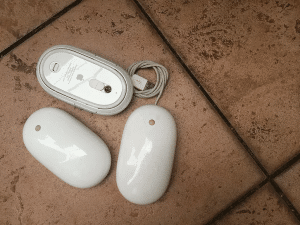Unless your mouse fails due to a hardware malfunction, such as being dipped in coffee or being thrown off the edge of your desk by a bored cat, the chances are that any performance issues you encounter can be quickly resolved using your operating system’s core settings application.
Tip: Graphical user interfaces are designed to be used with a mouse and are difficult to use without one. In the absence of a mouse or a touchscreen, review the popular keyboard shortcuts for Windows, macOS, and Linux to assist with troubleshooting.
A Mouse’s Cause Failures of the mouse come from five different places:
- Damage to the hardware is irreversible.
- There is a power outage or a loss of connection.
- The mouse and the work surface are in conflict.
- Software that is no longer supported.
- Misconfigurations or malfunctions in the operating system.

Read More: How To Set Up A Gaming Mouse
How to Repair a Non-Working Mouse on a Computer or Laptop
Because a mouse’s failure to perform properly can be caused by a variety of circumstances, diagnosing the issue is the best approach to get it working again. Try these stages, which are arranged from the most common and easiest to the most intensive.
- Examine the mouse for any signs of wear and tear. A cracked housing, a missing ball, sticky or quiet finger switch clicking, or a failure of the optical sensor to glow indicate that the gadget is damaged. Given the low cost of most mouse, hardware damage usually suggests that replacement rather than repair is the best option.
- Remove the mouse and clean it. Clean the mouse to check if it helps performance if the cursor moves in jerking motions or is less sensitive than usual. A wireless mouse or a corded mouse with a rollerball is simple to clean.
- Examine the mouse for any signs of wear and tear. A cracked housing, a missing ball, sticky or quiet finger switch clicking, or a failure of the optical sensor to glow indicate that the gadget is damaged. Given the low cost of most mouse, hardware damage usually suggests that replacement rather than repair is the best option.
- Remove the mouse and clean it. Clean the mouse to check if it helps performance if the cursor moves in jerking motions or is less sensitive than usual. A wireless mouse or a corded mouse with a rollerball is simple to clean.
- Connect the mouse to the USB port directly. If you utilize an external USB hub or a multi-card reader, the problem could be with that device rather than the mouse or USB port. To see if the problem is resolved, plug the mouse directly into the computer.
- Place the mouse on a suitable surface. Some mice are suitable for usage on (nearly) any surface. Many people are unable to. Examine your device’s limitations—you might need a mouse pad if you’re using an older mouse. Some optical mice, for example, are unable to detect movement on slick surfaces or those with extremely dark or light colors.
- Update the driver. Check the manufacturer’s website for available driver updates or use driver-updater tools. If your mouse won’t do something that the manufacturer promised it would do (side-to-side scrolling, for example), check the manufacturer’s website to see if a driver is required. These files are usually free.
- Release and re-pair a Bluetooth mouse. It’s not uncommon for Bluetooth devices to either lose pairing status or to be forgotten by the computer if a different Bluetooth mouse is paired with it.
- Disable the built-in trackpad. If your laptop has an internal trackpad, disable it using the settings application in your operating system. An external mouse may interfere with or override an internal trackpad.
